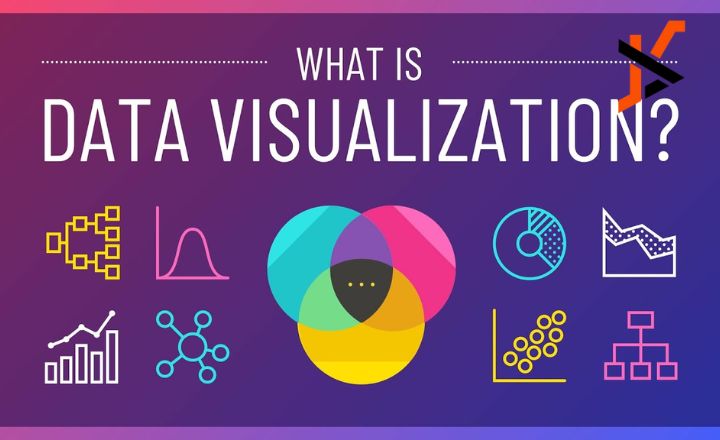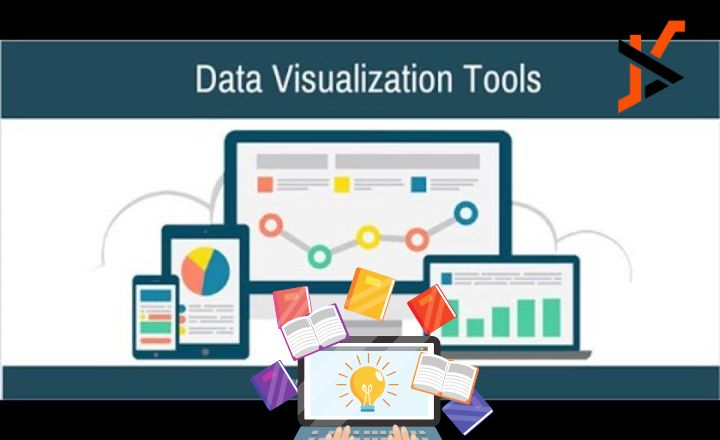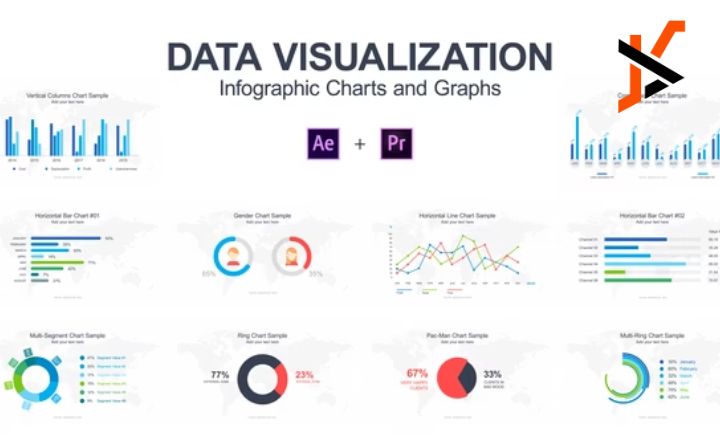In the digital age, the ability to convey complex information quickly and effectively is paramount. As vast amounts of data continue to proliferate, the demand for clear and engaging ways to communicate this information has never been higher. This is where data visualization and interactive infographics come into play. They transform raw data into visual narratives, making it easier for audiences to absorb and understand information. In this article, we will explore the data visualization and interactive infographics trends medium, examining their significance in various fields and the tools that are shaping their future.
Data Visualization and Interactive Infographics
Data visualization is the graphical representation of information and data. By using visual elements like charts, graphs, and maps, data visualization tools help users understand trends, outliers, and patterns in data. Interactive infographics, on the other hand, take this a step further by allowing users to engage with the data in real-time. This interactivity enhances the user experience and facilitates a deeper understanding of the information presented.
The Importance of Data Visualization
In today’s world, where information overload is commonplace, data visualization serves several critical functions:
- Simplifying Complex Information: Data visualization helps distill complex data sets into easily digestible visuals, allowing users to grasp concepts quickly.
- Enhancing Retention: Studies have shown that visuals are more easily remembered than text. Incorporating visuals helps improve information retention.
- Facilitating Decision-Making: Businesses and organizations can make informed decisions based on data insights presented through effective visualizations.
- Encouraging Engagement: Interactive infographics invite users to explore data dynamically, fostering a more engaging experience.

Current Trends in Data Visualization and Interactive Infographics
The landscape of data visualization and interactive infographics is continually evolving. Here are some of the most notable trends shaping this medium:
1. Emphasis on User Experience (UX)
User experience has become a focal point in the design of data visualizations and infographics. Designers are increasingly prioritizing intuitive interfaces that allow users to interact with data seamlessly. This shift means that data visualizations are not only informative but also enjoyable to navigate.
For example, the use of storytelling techniques in data visualization is growing. By crafting a narrative around the data, designers can guide users through complex information, making it more relatable and compelling. This approach encourages users to engage with the content on a deeper level.
2. Real-Time Data Visualization
As businesses require more immediate insights, real-time data visualization has gained traction. This trend allows organizations to monitor key performance indicators (KPIs) and respond to changes dynamically. For instance, sales dashboards that update in real-time can provide sales teams with the information they need to make quick decisions, ultimately improving efficiency and performance.
Technologies like streaming data and cloud computing have made real-time visualization more accessible. By integrating with APIs and data feeds, organizations can create dashboards that reflect the most current data, enhancing their decision-making capabilities.
3. Advanced Data Interactivity
Interactive infographics have leaped forward with advancements in technology. Users now expect a higher level of interactivity, such as the ability to filter data, hover for additional information, and manipulate visual elements.
For instance, interactive maps allow users to zoom in and out, click on regions for detailed statistics, and compare different data points seamlessly. This level of engagement not only makes the information more accessible but also encourages exploration and discovery.
4. Data Storytelling
Data storytelling combines data visualization with narrative techniques to create compelling stories. This trend is gaining momentum as businesses recognize the power of storytelling in influencing decision-making and engagement.
By framing data within a narrative context, designers can make the information more relatable and memorable. This approach can be particularly effective in presentations, marketing campaigns, and educational materials, where capturing the audience’s attention is crucial.
Tools Shaping the Future of Data Visualization
Several tools and platforms are leading the charge in data visualization and interactive infographics. Here are a few notable ones:
1. Tableau
Tableau is a powerful data visualization tool that enables users to create interactive and shareable dashboards. It allows users to connect to various data sources and visualize data in real-time. Tableau’s ease of use and robust features make it a favorite among businesses seeking to harness the power of data.
2. D3.js
D3.js is a JavaScript library for producing dynamic, interactive data visualizations in web browsers. It leverages the capabilities of HTML, SVG, and CSS, allowing developers to create complex and custom visualizations. D3.js is particularly popular among developers looking to build unique and highly interactive data representations.
3. Google Data Studio
Google Data Studio is a free tool that transforms raw data into informative, easy-to-read dashboards and reports. With its drag-and-drop interface, users can create interactive reports that integrate seamlessly with other Google products. This tool is particularly useful for marketers and business analysts who need to visualize data without extensive technical knowledge.
4. Infogram
Infogram is a user-friendly tool for creating infographics and interactive charts. Its intuitive interface allows users to drag and drop elements to design visually appealing graphics. Infogram is particularly popular among educators and marketers who want to create engaging content quickly.

The Future of Data Visualization and Interactive Infographics
As we look to the future, several factors will continue to shape the landscape of data visualization and interactive infographics:
1. Increased Use of Artificial Intelligence (AI)
AI-powered tools are beginning to revolutionize data visualization by automating the analysis process and generating visualizations based on data patterns. These tools can identify trends and insights that may not be immediately apparent, enabling users to make more informed decisions.
For example, AI can help create personalized dashboards that adapt to user preferences and behaviors, enhancing the overall experience. As AI technology continues to evolve, its integration into data visualization will likely become more sophisticated.
2. Greater Focus on Accessibility
Accessibility is becoming a crucial consideration in data visualization design. As organizations strive to reach diverse audiences, creating visualizations that are accessible to individuals with disabilities is essential. This trend includes using color palettes that accommodate color blindness, providing alternative text for visuals, and ensuring compatibility with screen readers.
By prioritizing accessibility, organizations can ensure that their data visualizations are inclusive and reach a broader audience.
3. Augmented Reality (AR) and Virtual Reality (VR)
The integration of AR and VR technologies into data visualization is an emerging trend that holds great promise. These technologies can create immersive experiences, allowing users to interact with data in three-dimensional spaces.
Imagine analyzing data trends through a virtual environment where users can manipulate data points and visualize complex relationships in real time. This level of interactivity could revolutionize how we engage with data and enhance our understanding of intricate datasets.
4. Sustainability and Ethical Data Practices
As data visualization continues to evolve, there will be an increasing emphasis on sustainability and ethical data practices. Organizations will need to consider how they collect, analyze, and present data, ensuring that their practices align with ethical standards and sustainability goals.
Transparent data practices will become essential, as audiences are more discerning about the sources of information. Organizations that prioritize ethical considerations will likely build trust and credibility with their audiences.
Conclusion
The “data visualization and interactive infographics trends medium” is a dynamic and rapidly evolving field that plays a critical role in how we communicate information. The importance of effective data visualization cannot be overstated, as it helps simplify complex information, enhances retention, and facilitates informed decision-making.
As trends continue to shape this medium, including advancements in technology, increased interactivity, and a focus on user experience, the potential for data visualization and interactive infographics will only grow. By embracing these trends, organizations can create compelling visual narratives that engage audiences and facilitate deeper understanding.

